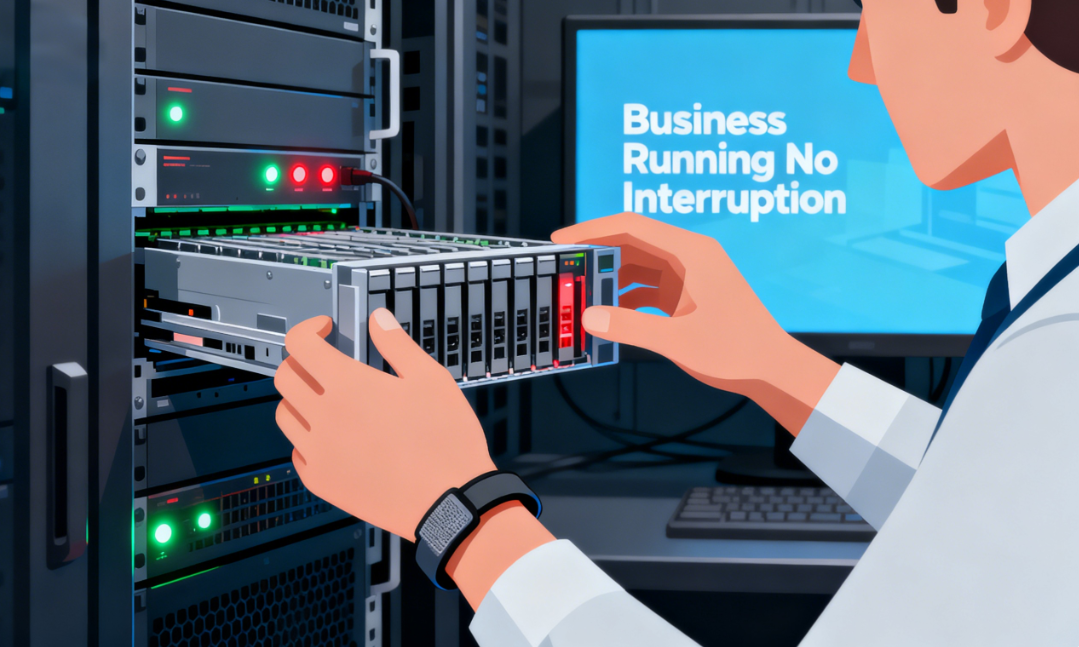Upgrading Without Waste: How to Reduce Hardware Obsolescence Costs with Blade Server Modular Designs
In today's rapidly evolving digital era, enterprise data centers face significant challenges: business growth demands continuous expansion of IT computing power, yet traditional hardware upgrade models often entail a complete overhaul—entire fleets of legacy servers are discarded. This not only results in massive resource wastage but also incurs substantial hardware disposal costs. Each upgrade represents a costly, disruptive investment.
Is there a solution that allows our IT infrastructure to upgrade smoothly, precisely, and economically, like building with blocks? The answer is yes. The modular design of blade servers is precisely the smart choice that solves this problem, enabling “upgrades without waste.”

The Pain of Traditional Server Upgrades: Dual Waste of Resources and Funds
Before discussing solutions, we must first acknowledge the core pain points of upgrading traditional rack servers:
Complete disposal leads to staggering waste: When CPUs or memory fail to meet demands, even if components like power supplies, chassis, and hard drive trays remain functional, the entire server must be discarded, generating massive amounts of electronic waste.
Resource Silos and Low Utilization: Servers procured at different times form isolated resource silos, making unified management and resource allocation difficult. This leads to overall low IT resource utilization.
Complex and Time-Consuming Upgrades: Replacing entire units requires data migration, system reinstallation, and network reconfiguration. The entire process carries high risks of business interruption and incurs substantial labor costs.
Fixed Space and Energy Costs: Legacy servers occupy valuable rack space and power capacity, yet their performance output is disproportionate, driving up overall TCO (Total Cost of Ownership).
Blade Server Modularity: Achieving “Precision Investment and On-Demand Upgrades”
The core concept of blade servers lies in “resource sharing” and “component decoupling.” Their architecture primarily consists of blade chassis, compute blades, network modules, storage modules, and management modules. This highly modular design offers a revolutionary solution for reducing hardware obsolescence costs:
Upgrade the “Core,” Not Replace the “Whole”
When computational performance becomes a bottleneck, there's no need to replace the entire server. Simply remove the old compute blade and insert a new, higher-performance blade—much like swapping computer memory modules. The retired blade can still be utilized in less demanding environments like testing, development, or non-core business operations, enabling tiered resource utilization and significantly reducing direct hardware disposal.
Resource Pooling Eliminates Performance Silos
The blade chassis backplane provides unified power, cooling, and network connectivity. Network and storage modules function as shared resources dynamically allocated to all compute blades. When higher network bandwidth or greater storage throughput is needed, simply upgrade the corresponding switch or storage modules without touching the compute units. This decoupled design enables independent, flexible upgrades for each resource category.
Hot-swap Capability and Rapid Deployment for Zero Business Impact
Modular design supports hot-swap functionality for all critical components (blades, fans, power supplies, modules). Hardware upgrades or maintenance require no system shutdown, minimizing service interruptions. New compute blades can be rapidly deployed and configured via the integrated management module upon insertion, significantly shortening upgrade cycles while reducing operational complexity and labor/time costs.
Extreme Space and Energy Efficiency, Reducing Infrastructure Costs
A single blade chassis can accommodate multiple compute blades (e.g., 8, 16, or more), sharing power and cooling systems. Compared to rack server clusters delivering equivalent performance, blade servers save over 50% in data center space and over 30% in energy consumption. This means you reserve valuable data center space and power capacity for future business expansion while directly reducing long-term operational costs like electricity bills.
Long-Term Perspective: How Does Modular Design Extend IT Infrastructure Lifecycles?
Investing in blade servers isn't just purchasing hardware—it's building a sustainable, highly future-proof IT infrastructure.
Protecting Initial Investment: A high-quality blade chassis can span multiple hardware refresh cycles. Over the next 5-10 years, you may only need to continuously purchase and upgrade internal blades and modules, while the chassis itself serves as “real estate” for long-term utilization.
Addressing Future Uncertainty: Business demands change rapidly. Modular architecture empowers IT departments with unprecedented agility. Whether requiring enhanced computing power (AI/ML), higher network speeds (25G/100G), or expanded storage capacity, rapid responses are achievable through module replacement or addition. This avoids obsolescence of the entire architecture due to shifting technology roadmaps.
Green IT, Fulfilling Corporate Social Responsibility: By reducing hardware waste and lowering energy consumption, the modular design of blade servers embodies enterprises' commitment to green data center principles and sustainable development.
In an increasingly competitive market environment, every IT investment must deliver maximum value. The modular design of blade servers, centered on the principles of “on-demand scaling, precise upgrades, and resource reuse,” successfully transforms hardware upgrades from an “expensive revolution” into an “economical evolution.”
Choosing blade servers means choosing a smarter IT infrastructure path with lower hardware replacement costs and higher return on investment. Don't let costly hardware obsolescence slow your innovation. It's time to harness the power of modularity and inject lasting vitality into your data center.



